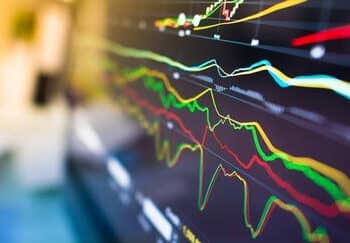Jamieson Coote Bonds chief investment officer Charles Jamieson has a word of advice for jittery investors: take a close look at the defensive part of your portfolio.
Mr Jamieson’s fund takes an active approach to Australian federal and state government bonds, as well as ‘supranational’ debt (e.g. bonds issued by the World Bank).
It’s the type of asset class that typically has its “place in the sun” two out of every 10 years – and while he’s not predicting a “near-term market calamity”, Mr Jamieson reckons it could soon be his time to shine.
So far in 2018, markets have been coping with rising bond yields, full employment, US rate hikes, a weak US dollar and rising fiscal deficits spurred by tax reform, he said.
“We have seen these exact issues before. The year was 1987. The dramatic market events over the last week are a stark reminder that markets don’t always reflect economic reality,” Mr Jamieson said.
Unlike other commentators who have talked down the spike in volatility in stock markets in past weeks, Mr Jamieson thinks it could be here to stay.
Part of the reason, he said, is that investors who bought into equities in January (when there were $100 billion of inflows) may well exit their positions if and when the market bounces back, planning to buy back in at a lower price.
Hence, volatility breeds more volatility, he said – noting that quantitative and computer-driven algorithms also play a role by loading higher volatility into their models.
“With a higher volatility input, the model must rebalance and this means selling assets into the market. As these systems sell (often as a collective herd), new sponsorship needs to be found for those assets that are being disposed,” he said.
“This deleveraging effect will in itself feed into greater volatility as spreads widen and ranges increase, again lifting the volatility input for quantitative systems, hence triggering another round of liquidations and de-risking.
“The increase in volatility is extremely common at market tops and a warning bell is in play after the parabolic type moves at the end of the market cycle.”
Jamieson Coote isn’t advocating a massive shift into bonds. Indeed, it is important to have exposure to equities in order to participate in the final “parabolic” move towards the market top, he said.
But for investors who are close to retirement and hence have a “huge amount” of sequencing risk in their portfolios, it makes sense to be “super careful” at a point when equity markets are “fraught with danger”, he said.







